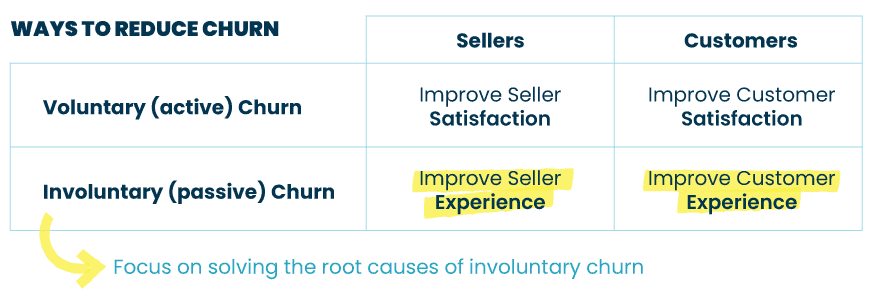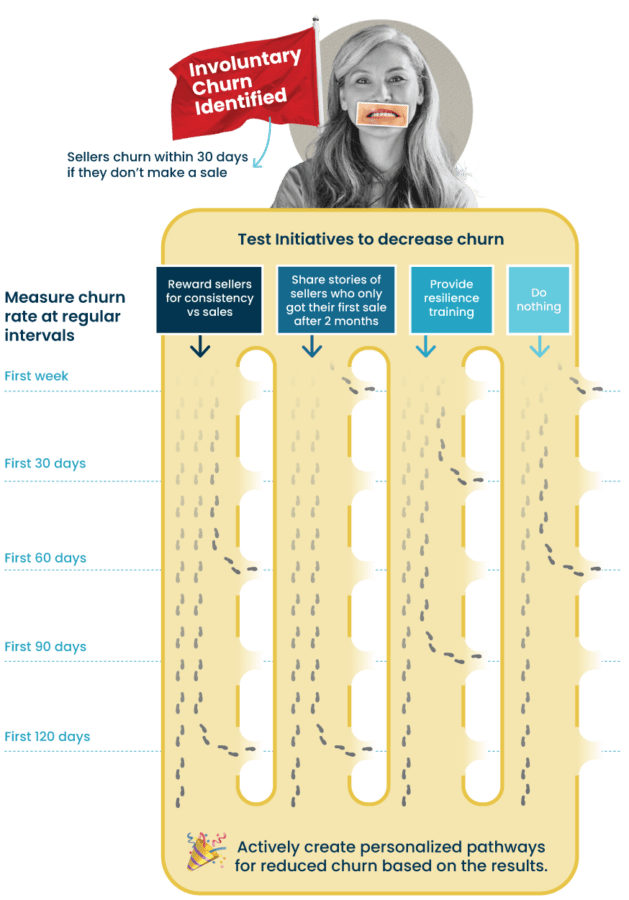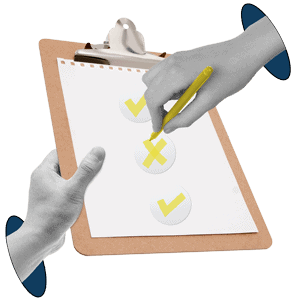How to Reduce Seller Churn

Top Reasons for Churn & How to Reduce Churn
The Top Priority for 2024 is Field Retention. To improve the field retention rate, we need to hone in on why sellers are leaving in the first place and actively put measures in place to combat these issues.
Addressing burnout-driven churn before it is too late
As a society we’ve gone through a number of highly traumatic, prolonged experiences – which will have a compound effect on sellers’ mental health. According to American Psychological Association, 2022 trends report, there’s an ever-increasing risk of burnout for virtually everyone. Burnout is characterized by emotional exhaustion, depletion of empathy and decreased sense of accomplishment.
When applied to a social selling role, this makes outreach and connection virtually impossible, leading to passive churn or drastic decrease in effectiveness. I believe that focusing on field well-being and proactive prevention of burnout can quickly become a strategic advantage for organizations. Driving purpose and a sense of accomplishment, including wellness practices and self-care into training routines are just the beginning that can make a world of a difference to burnout-driven churn rates, but even more so in someone’s life.
Why is Field Retention more important than ever before?
Churn has always been an issue but in the face of an economic downturn, retaining sellers and their existing customers is even more important because to replace them is costly. Ongoing digital transformation projects, investments into social commerce, and renewed product lines will all be for nought if the field has dwindled and lost faith in the company.
Field Retention is the most important metric of 2024.
The Two Types of Churn
![]()
Voluntary Churn
Where most social selling companies focus. Voluntary Churn is when sellers actively choose to leave your company.
Examples:
- No longer likes the products
- No longer interested in social selling
- No longer needs the opportunity
![]()
Involuntary Churn
More difficult to identify, but it’s the more common type of churn. This is when sellers feel forced out, not because they want to but because in their current state they have no option but to quit.
Examples:
- Feel like they’ve tried everything and aren’t seeing results
- Don’t feel supported by the company
- Not sure what to do to get started
- Don’t know how to progress
By looking at the difference between voluntary and involuntary churn, companies can identify where is most prudent to focus their efforts.

Improve the Seller Experience
(& thus improve the Customer Experience)
Social Selling companies know how to improve the seller experience. The cornerstones are:
Field wellbeing
- Foster Community
- Connect sellers with sellers and corporate
- Provide resources for mental health and wellbeing
Growth & Recognition
- Onboarding
- Strength Spotting
- Professional development and continuous learning
Diversity & Inclusion
- Make sure everyone knows they belong
- Champion marginalized groups
The difference between these initiatives succeeding or failing is accurate measurement against universal KPIs. However you decide to implement and/or strengthen these initiatives the key is making sure you can measure their performance and adjust accordingly.
How to Measure Field Retention
- Identify the trigger points that cause involuntary churn for sellers
- Decide on the initiatives to test to decrease churn
- Measure the impact of the experiments
- Constantly adjust
For example:

Choose a platform that impacts key churn factors
Focusing on churn reduction is worthless if you can’t drive desired behaviours and track the impact on key churn factors. When choosing field tools and solutions, make sure they have functionality around behavioural goals and milestones. Even better, introduce an internal champion group or external consultant who can then make suggestions based on the behavioural data to make further refinements to your programs and field initiatives.
Checklist: Alignment with churn factors
- Daily insights into seller behaviours
- Weekly and monthly achievements
- Tracking key success metrics (prospecting, learning, customer relationships)
- Identify groups that are likely to churn (activity patterns, task completion, lagging performance)
- Allow for top performer vs lagging performer comparison

Find out the trends shaping 2024:
Social Sharing
